Kamon: There’s a thousand-year tradition that the Japanese pass their family crests from generation to generation. The family crest is called “Kamon” in Japanese and can be seen everywhere in Japan. Kamons are symbols for each family in Japan, from the general family to the royal family.
“Monsho Uwaeshi” – They are Japanese family crest artisans who are highly experienced in designing a new yet traditional pattern. They are the torchbearers of this beautiful culture to the later generations to come.
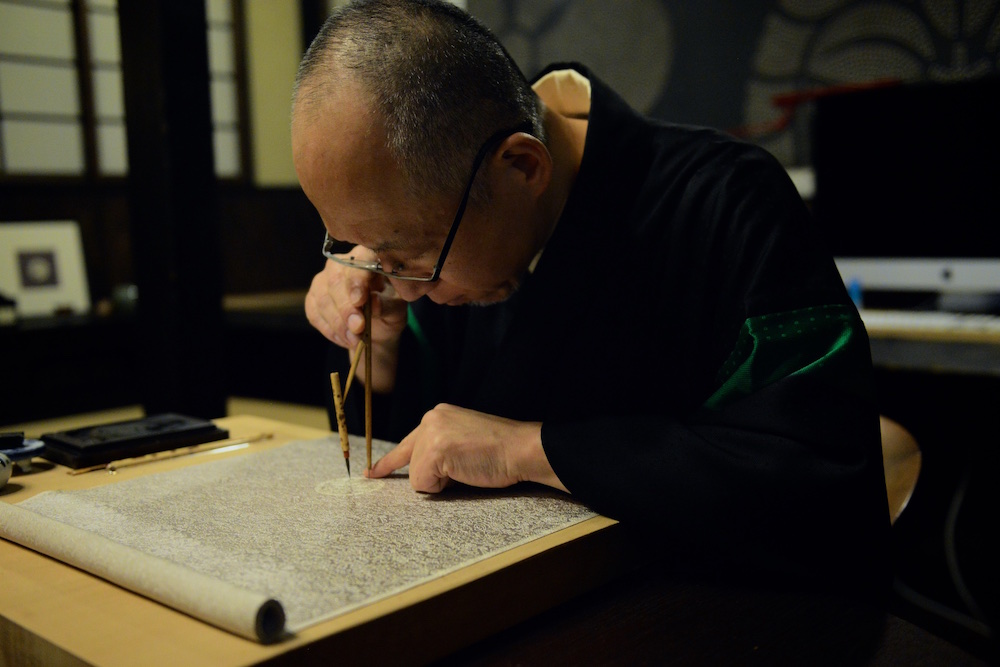
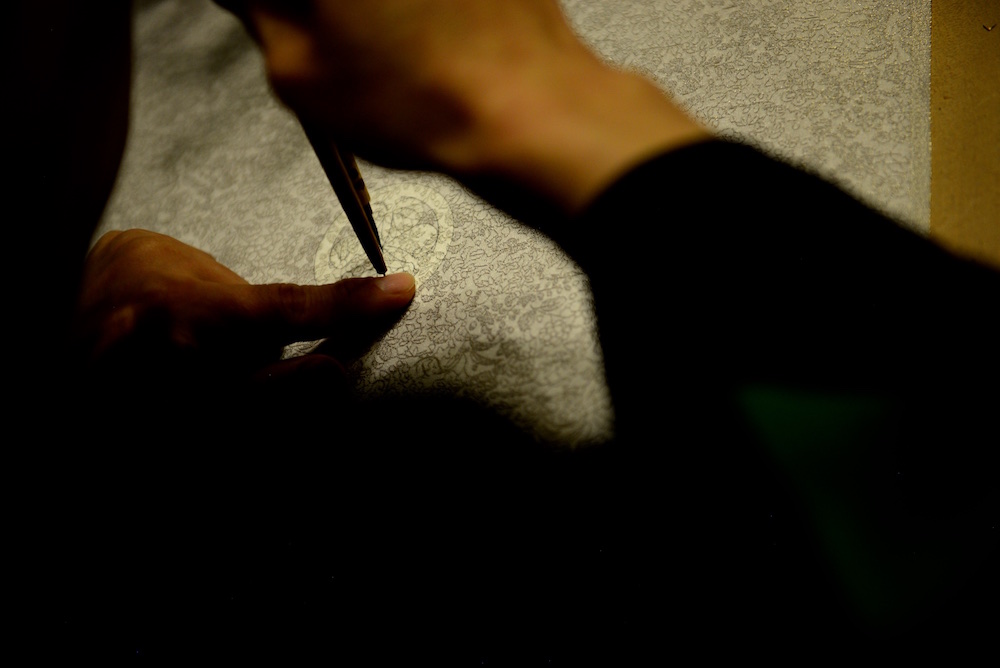
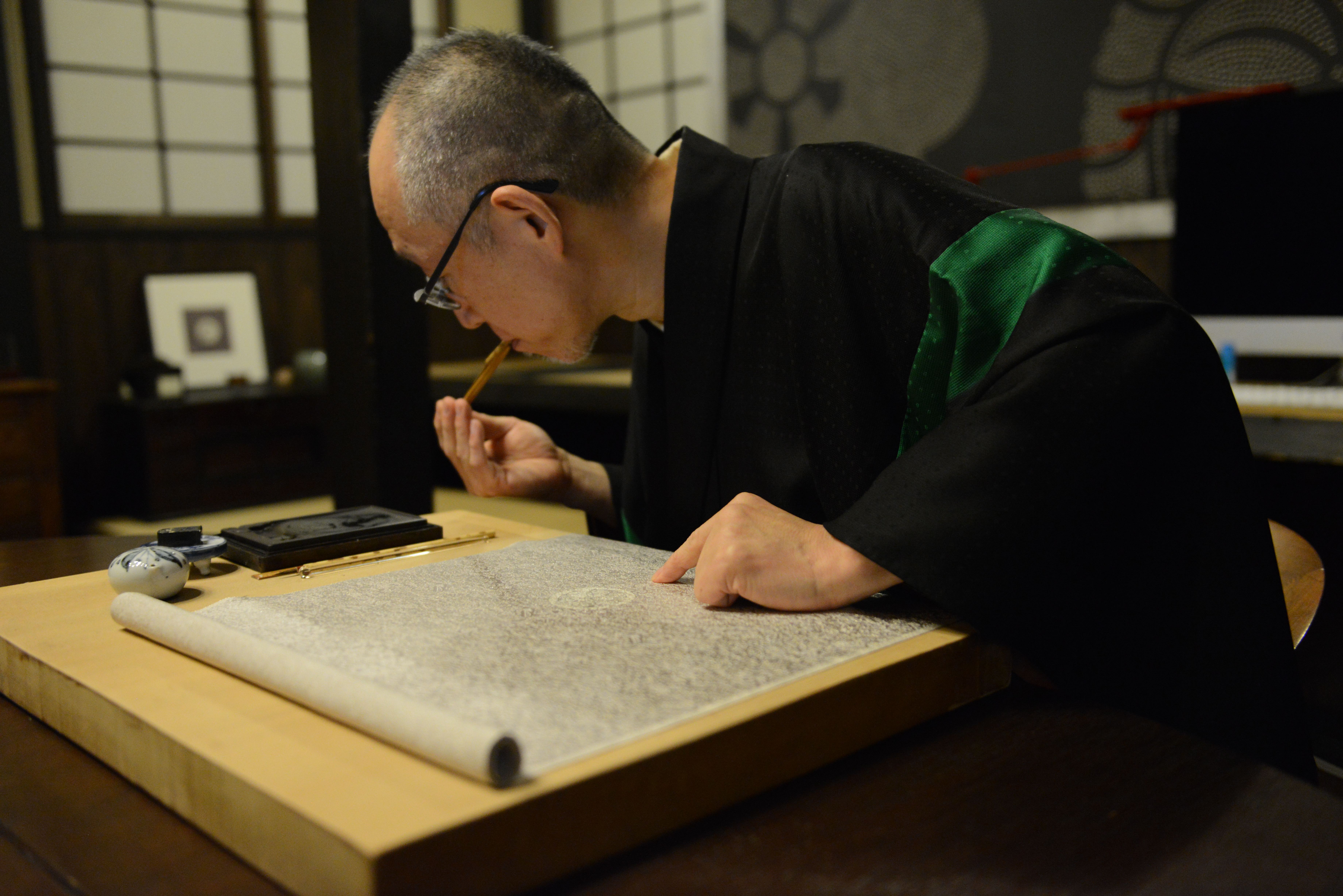
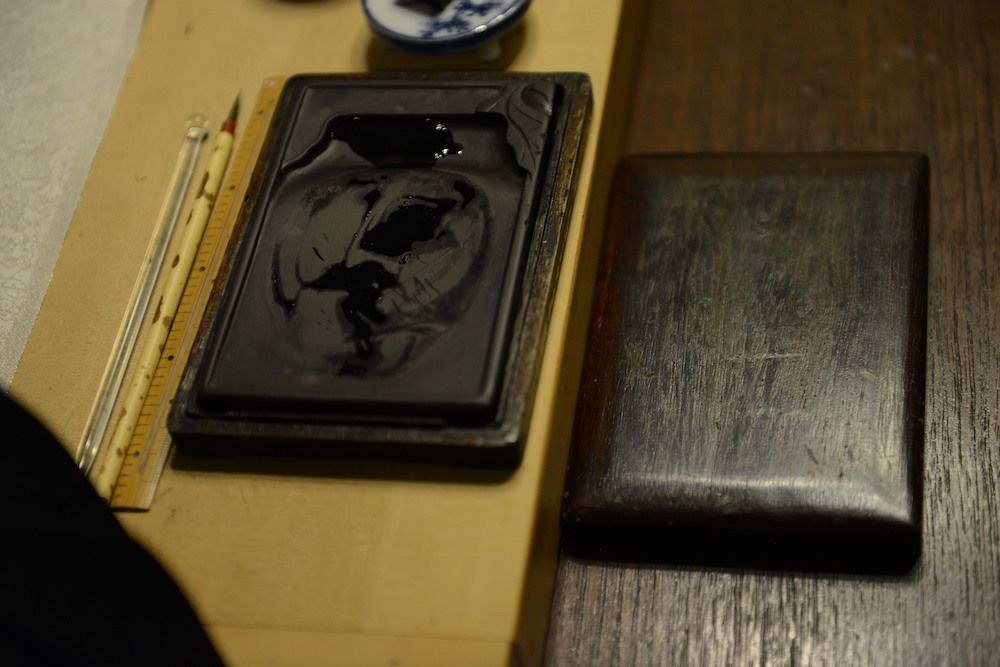
Table of Contents
We were fortunate to have an opportunity to interview two Japanese family crest artisans at their studio, who welcomed us warmly.
Their design studio is located in the heart of old Tokyo. A well-decorated old Japanese-style house interior, which they created themselves by buying materials on the internet, makes you feel excited at its design and your back straight at the same time.
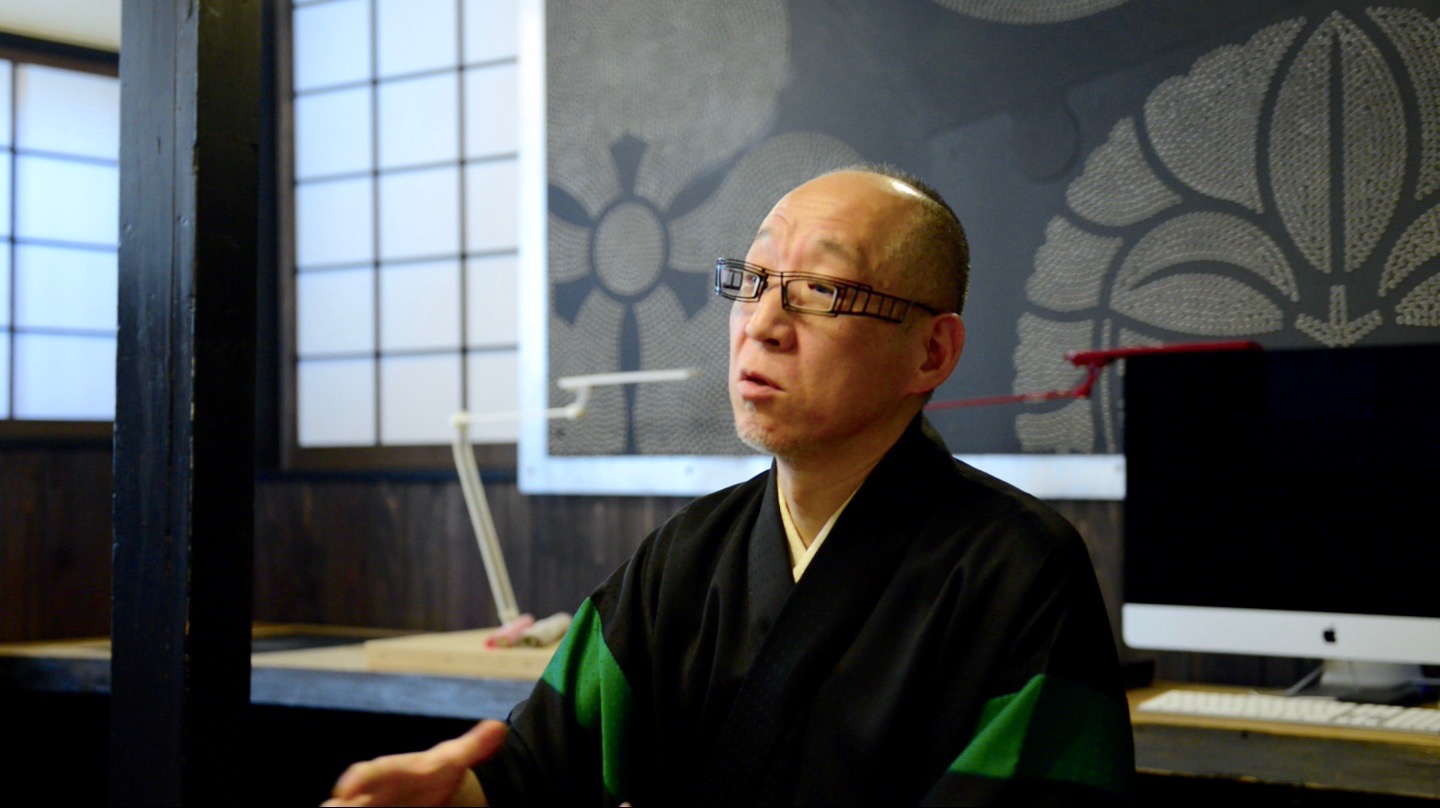
Monsho Uwaeshi – The Japanese Family Crest Artisans
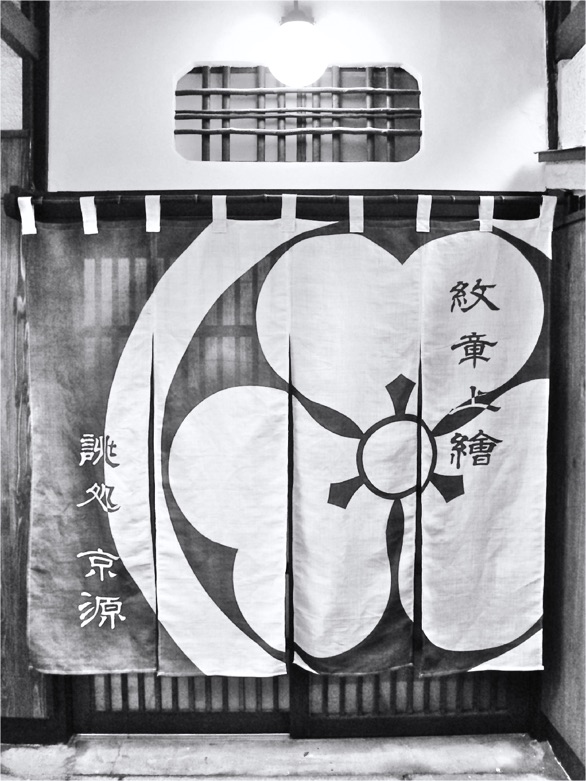 Noren (shop curtain) of Kyogen, the family crest design studio
Noren (shop curtain) of Kyogen, the family crest design studio
Shoryu Hatoba and Yoji Hatoba, the Japanese family crest artisans, work at their studio in Ueno, Tokyo.
Shoryu, the 3rd generation of Monsho Uwaeshi, who began his career as a traditional Japanese family crest artisan. His father was the one who developed the framed family crest.
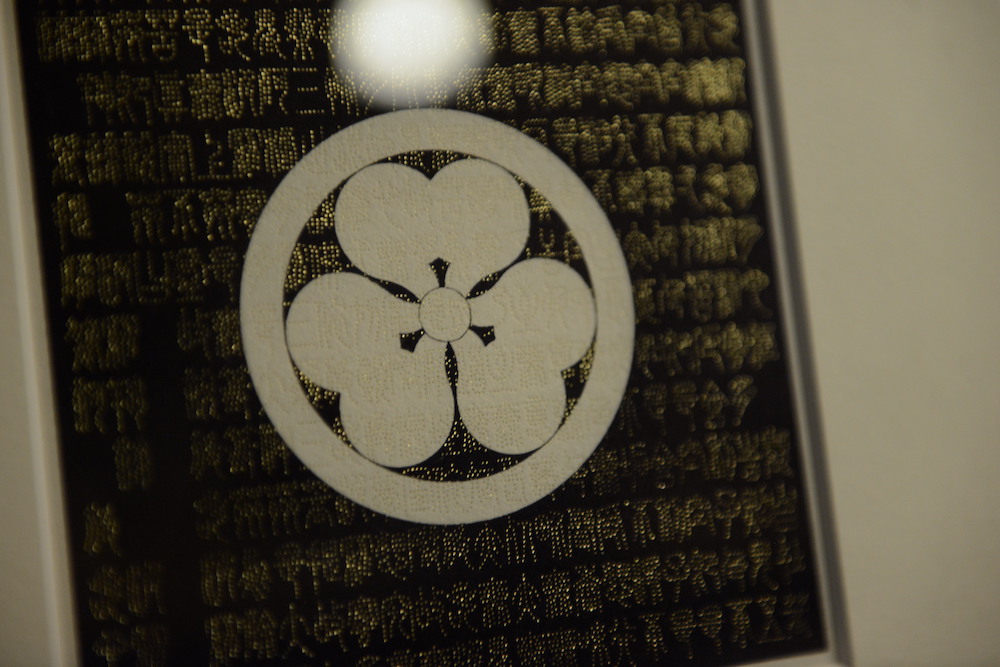
When he turned 50, his desire to create something new made him produce “kamon x komon,” which features the Edo-komon, a particular dying technique of repeated small pattern.
The Shoryu’s first private exhibition was held at a historical archive in Vienna, Austria. They used to work only on a kimono, but their field is expanding.
History of Monsho Uwaeshi – Kamon
Traditionally, they only worked on kimono to draw the family crest. We could say there were two prime times for the kamon tradition and traditional Uwaeshi. One is back in the Sengoku period, when Samurai fought for their lives, and the family crest they bore on the battlefield was precious next in their lives.
Another one is back in the Edo era, even after Samurai left the battlefield, they still need the family crests for the rituals and events to clarify their lineage. In addition to that, general people began using family crests in this period, which boosted the number of crests exponentially.
Samurai adopted the patterns loved by court nobles to recognize each other on the battlefield.
It has a unique and sophisticated design, and each Kamon has its meaning based on the bearer’s wish. Thousands of Kamon have been inherited from generation to generation to show the family’s lineage.
Those beautiful patterns have been created by professional designers called “Monsho Uwaeshi”. Their main work was to draw patterns of crests on Japanese kimono.
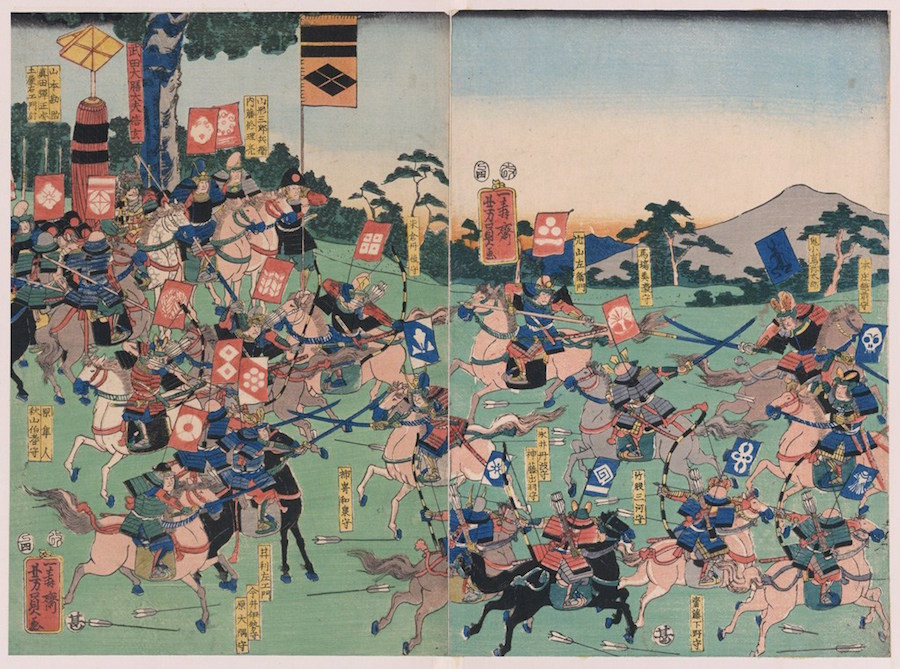
Over time, the Kamon tradition spread among general people and quite a few numbers of humorous crests were created.
However, do we see Japanese people wearing kimonos as a daily outfit? Not anymore. This answer doesn’t mean the end of this tradition but does precisely the opposite.
Japanese Family Crest: List of the Lineage Symbols
You think of a willow, even the strongest wind can’t tear them down.
The traditions we see today from the old times have flexible qualities, without exception. Contrary to the image of being ‘artisan’, their view of work is broad and flexible.
When it comes to the style of Monsho Uwaeshi, the attitude of working with collaborators is one of the most essential keys to keeping their tradition alive. They create new designs while following tradition backed by its origins and history. Better than anything, they intrinsically know the beautiful and incredible designs that can be made only by experienced ones.
Initially, the Kamon tradition can be traced back to court nobles’ patterns in the Heian period (794-1185). After they were used vigorously on the battlefield by Samurai in need of recognition from friend and foe, the tradition was widespread among general people in the Edo period (1603-1868).
Unlike Samurai, who liked the simple, clean, and apparent patterns, general people enjoyed the stylish patterns with a sense of humor. Those demands boosted the numbers of unique Kamon in this period, and many were lost in time.
Monkiri – Cutting Out Beautiful Patterns
They occasionally throw workshops to open doors for people who have not seen or experienced the the Japanese family crest. It’s called “Monkiri”; you fold and cut the origami paper in a certain way, open it up, and find a fantastic pattern of paper in your hands.
The 4th generation of Uwaeshi, Hatoba Yoji, mainly takes care of the workshop of Monkiri. The pattern people originally used was the family crest, and the more you practice on them, the more you can create more elaborate and beautiful patterns.
They found out about this game in search of a way to spread this tradition. It’s quite a coincidence that it turned out it dealt with Japanese family crest patterns initially.
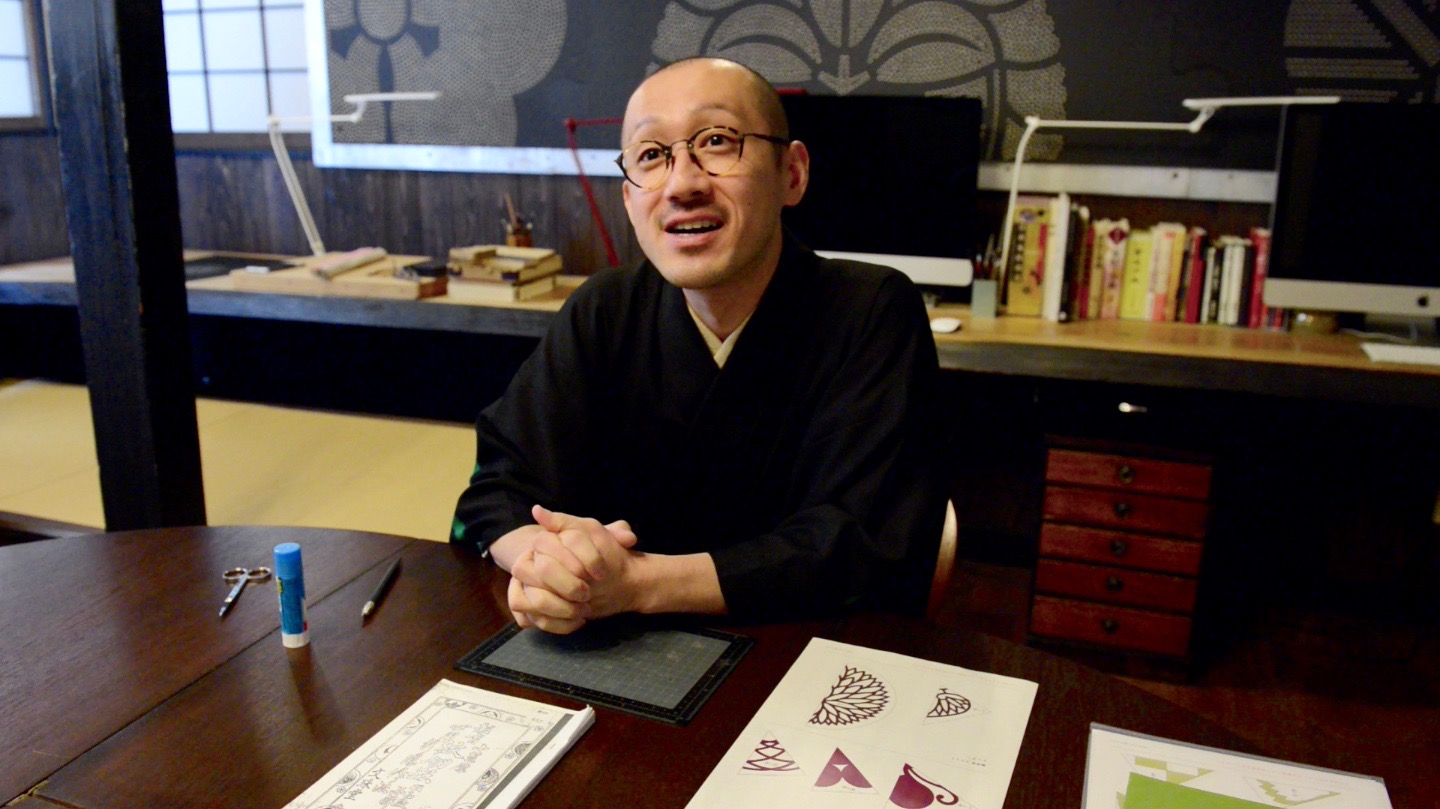
Everybody in the workshop turns out to be marveled at what they have just created. Nobody couldn’t imagine a little folding and cutting would create those beautiful patterns with their own hands. (Yoji Hatoba)
It used to be taught in schools, and every girl knew how to cut them out and learned the beautiful patterns naturally.
Once, they were asked to teach foreign exchange students about the history of Japanese family crest at Waseda University, and they found them interesting.
They introduce Monkiri to people worldwide, hoping it would let them have interests in the kamon and that would make a great start. In addition, this pattern-cutting game is a great way to have the time to concentrate and release, just like one of the effective meditation methods for your mind.
Oh, by the way, have you checked their website? If not, we suggest you do so now. Do you wonder who created this fabulous website for them? Yoji did it himself, and after that, many clients were coming in, and still, they are. From the design of their website, you can imagine what you can expect, can’t you?
Japanese Design Ideology and Design Process – Kamon
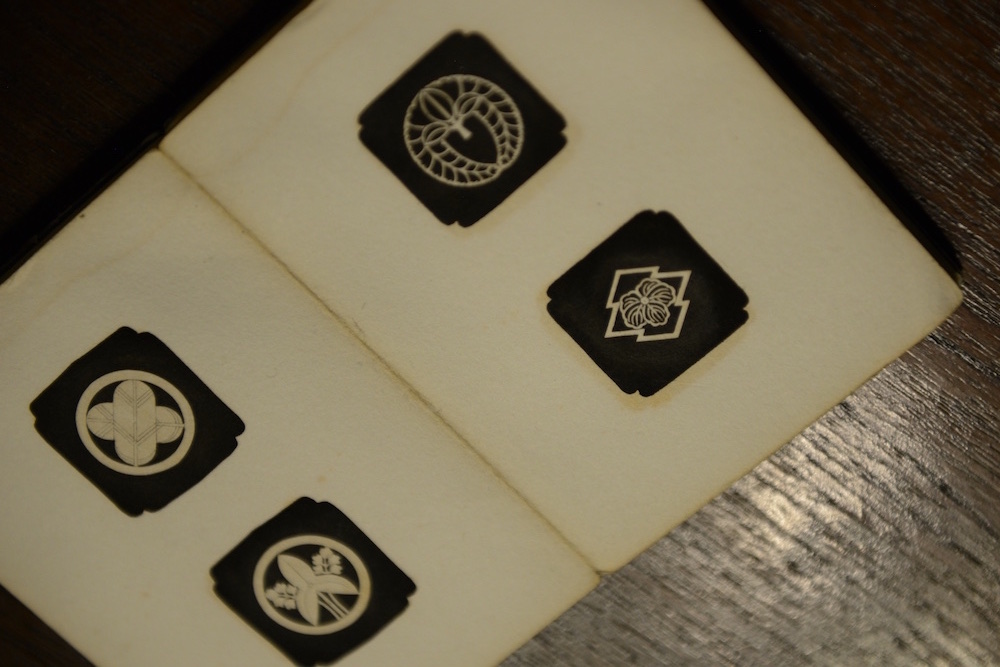
Japanese family crests have their spot in various crest designs. Compared to the Western coat of arms, it stands out for its simplicity and high visibility.
This different design comes from various patterns of thought.
Shoryu explains the differences between them with the example of fountain patterns. You see Western fountains designed to spout into the air while traditional Japanese-style fountains are designed to flow water downward as a natural river flows that way.
We could say western sentiment for nature is to take control and conform to them while Japanese way of thinking nature is to nestle close always with a feeling of awe and respect knowing it could threaten their lives as a natural disaster. (Shoryu Hatoba)
The natural features and climate cultivate particular sets of thoughts and cultures, and the ideas of Shinto are exactly based on them.
The different approach can be seen in screenwriting, too, as western play attempts to explain everything in words while the Japanese one uses lesser words and leaves a lot to the viewer’s imagination. (Shoryu Hatoba)
The beautiful design itself has its value, and the fact they have a long history underneath makes it even more valuable.
Shinto Beliefs: 5 Core Values of Japanese Indigenous Religion
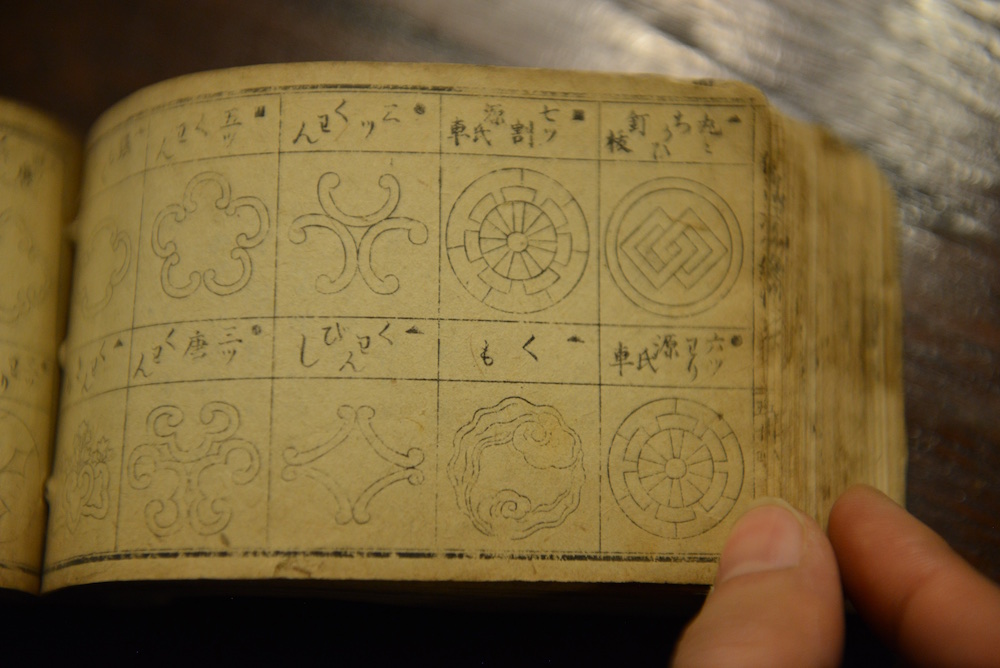
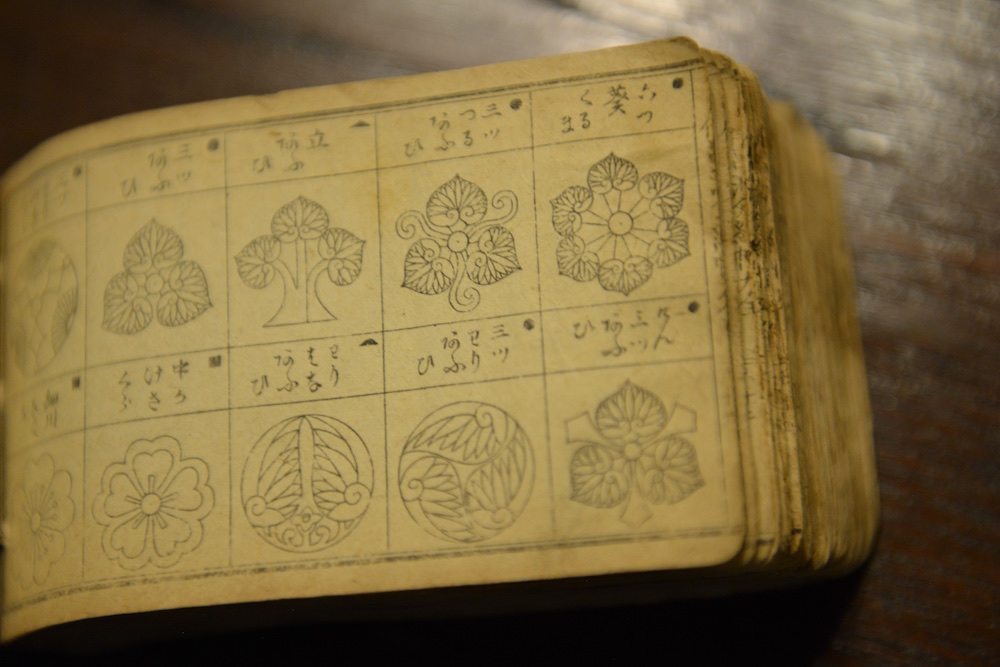
What Makes Their Design Outstanding?
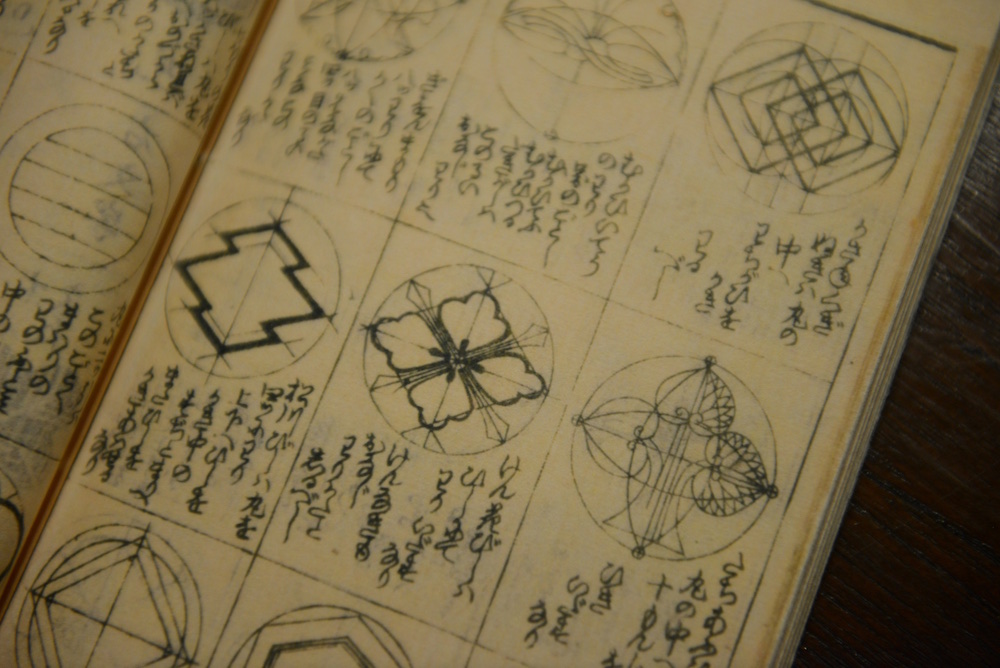
The Japanese family crest patterns can be described in a word – an arc.
Just like we find the pattern created based on the golden ratio, Japanese family crest patterns impress us with their unique and sophisticated arcs.
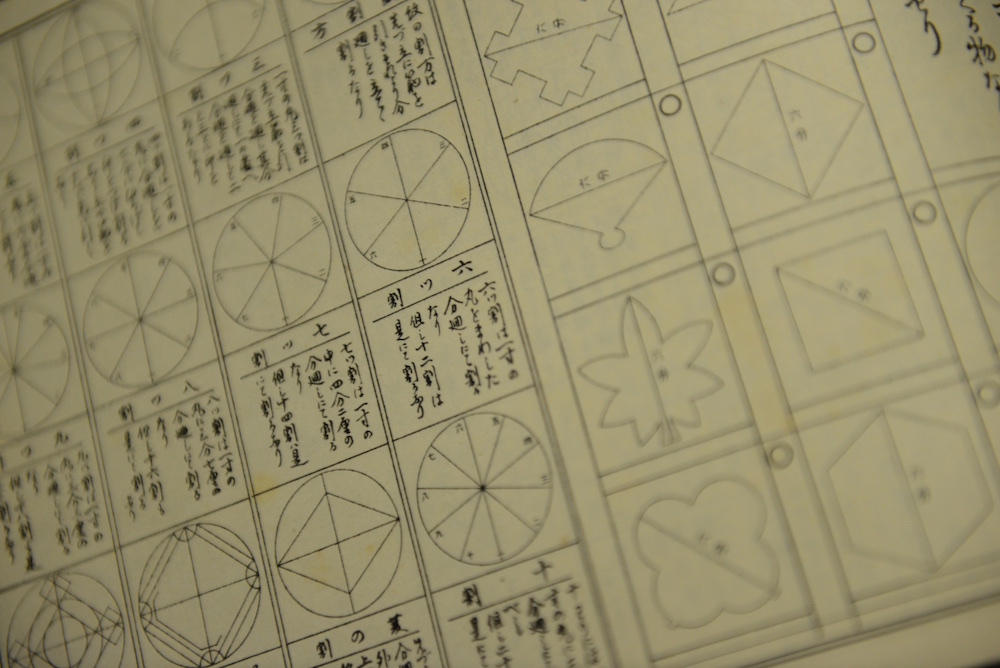
The Design Process
As we have seen in the characteristics of the Japanese family crest, the design concept is to eliminate lines and patterns thoroughly and leave only the ones that have a meaning.
The chosen lines are straightforward, but that doesn’t mean they are primitive. They are exquisite and produce highly sophisticated patterns.
We can explain why the tradition flourished in the Edo period since they are easy to identify. For those who run the business, the logo is vital for customers to recognize even if they don’t read the words.
The technology brought a new inspiration.
They create new patterns with old and latest tools. The traditional bamboo compass and Illustrator on Mac ensure their design to be beautiful, innovative, and cool. Since they adopted Illustrator as their design tool, it’s been a great tool to stimulate their minds and create brand-new patterns.
Shoryu developed the new, original method since he couldn’t draw the Bézier Curve himself.
He had no problem adapting himself to Illustrator since he’s used to drawing designs with arcs by freehand.
He creates new designs with them, and the mandala created by arcs, any lines, and patterns that don’t have existing value are strictly eliminated.
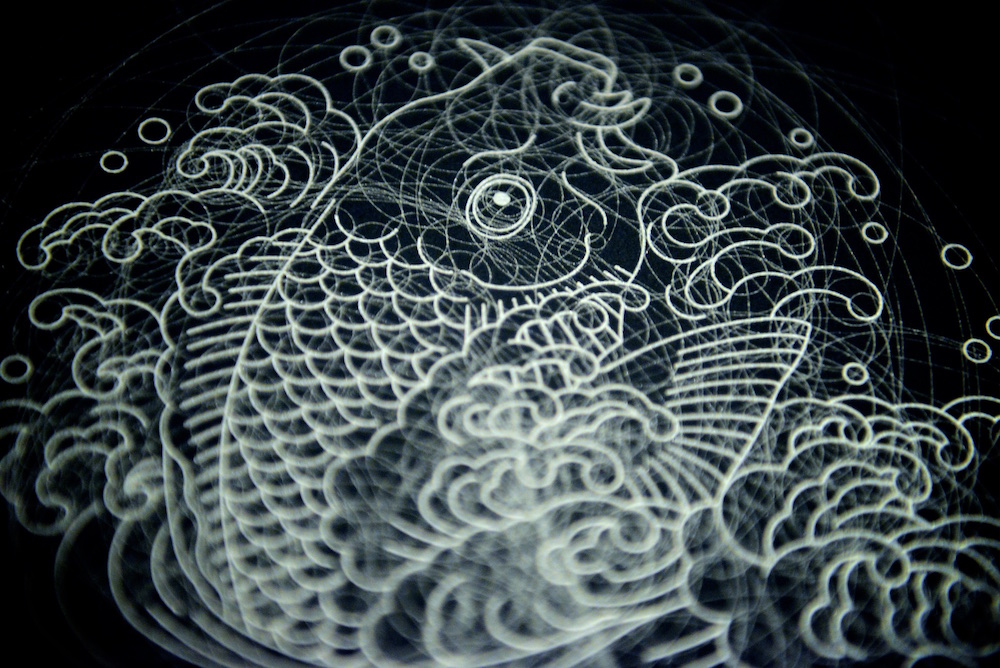
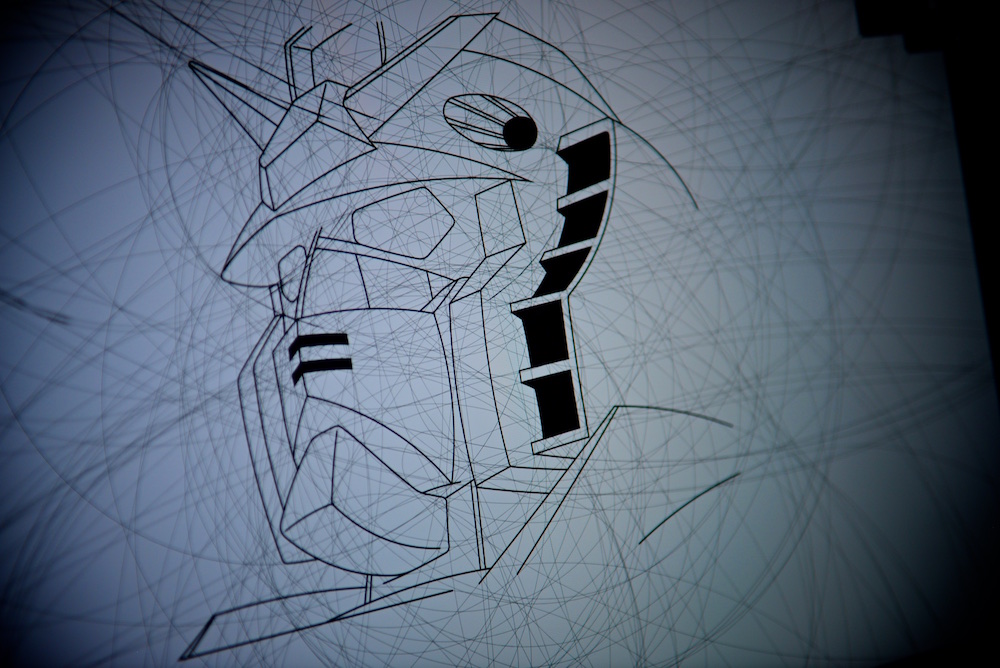
Not all traditions can survive with time, but always innovative artists find their way to keep their works alive. Their canvas is not only on the kimono but anything you can think of putting the crest on.
We genuinely believe that living traditions are innovation.
The Kamon is an excellent crest that tells its attribute clearly on any medium so that it can be on a bag, tableware, tiles, doormat, or tapestry… Anything you can think of. By creating new kamons and putting them on the new medium, this tradition lives on.
Just like the Western coat of arms has multiplied its numbers according to the change in interests, trends, and fashion, Japanese family crests have grown in numbers and found their new medium.
Where You See Kamon Today
So where can we see real kamons today? Except for the chances we go to special Japanese occasions such as a wedding party or a funeral, we don’t have an opportunity to see the kamons on kimono. But the kimono is not the only medium we can see the kamons as we’ve seen.
In town, you can find various kamons at the shrines and temples, old shops and stores that lasted some decades or even some hundreds of years.
Nowadays, the place you can spot the kamons the most is a graveyard. It is like a trade fair of the kamons and you’ll be amazed at their varieties.
The Kamons in the Graveyard
The kamon culture on the kimono is dying down due to the abolition of the family system and the encouragement of Western-style outfits, however, which opened up new opportunities and fields to put the kamons in.
You take a look at each Kamon pattern, and you find each meaning, fun facts, or history. They can take you on a journey back to old times with family lineage.
Collaboration Is the Key – Go with the Flow
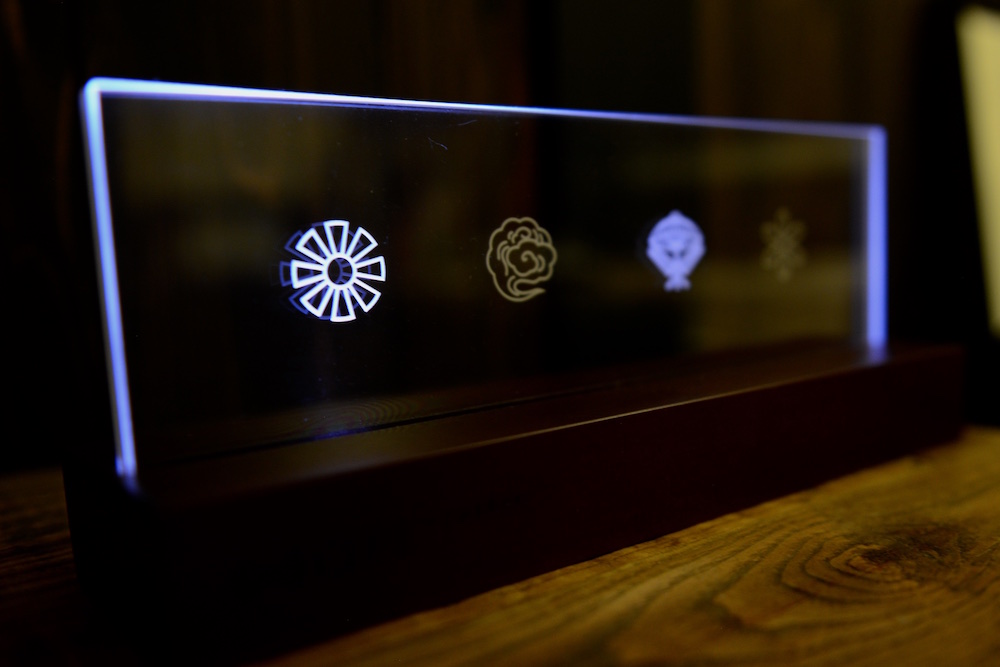
Collaboration opened up new doors.
Ever since they were asked to create a logo for the company, their field of work has been broadening.
Their list of collaborators is expanding in numbers and variety. For example, their monumental work completed with 13,200 rivets brought them a new collaborator, FURLA, the Italian luxury company which is famous for its bag lines. They can work with any maker or individuals to satisfy their needs and wants in the design.
The future of Kamon lies exactly in that: collaboration.
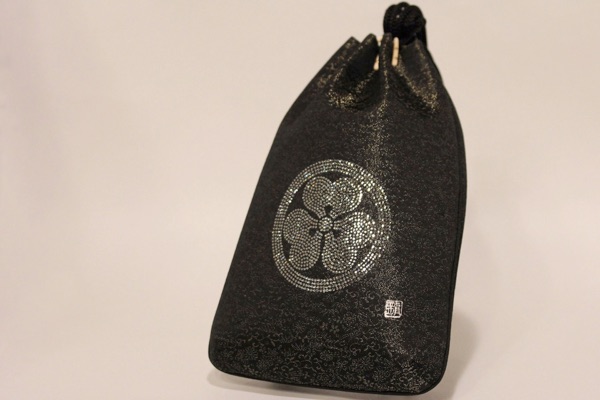
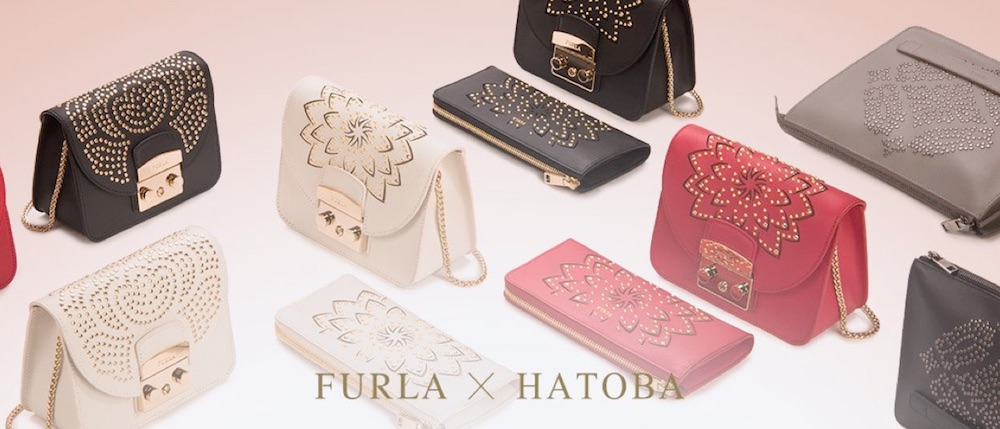
The excellent and avant-garde Kamon artisans were willing to try new ideas to satisfy customers. Perhaps tradition lives not to limit or restrict anything but to enrich our lives.
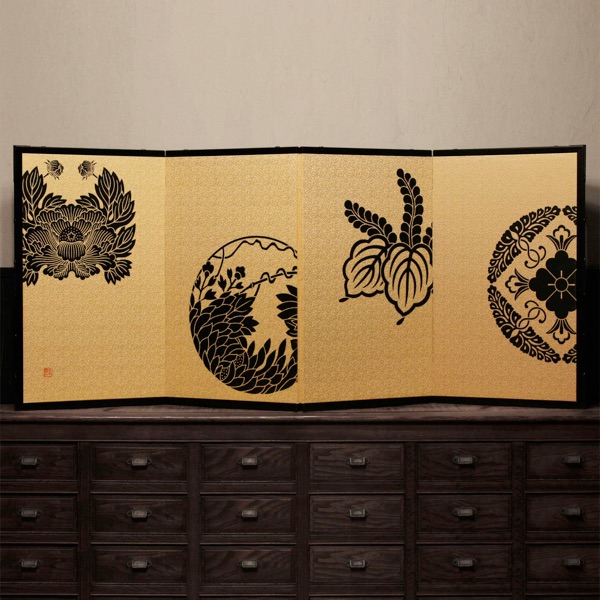
Numerous designers have worked with them because they thought the design/pattern they create could bring something new or valuable to their product. Not a few individuals asked them to make a new family crest to start their crest history.
The Lineage Starts with You – Kamon
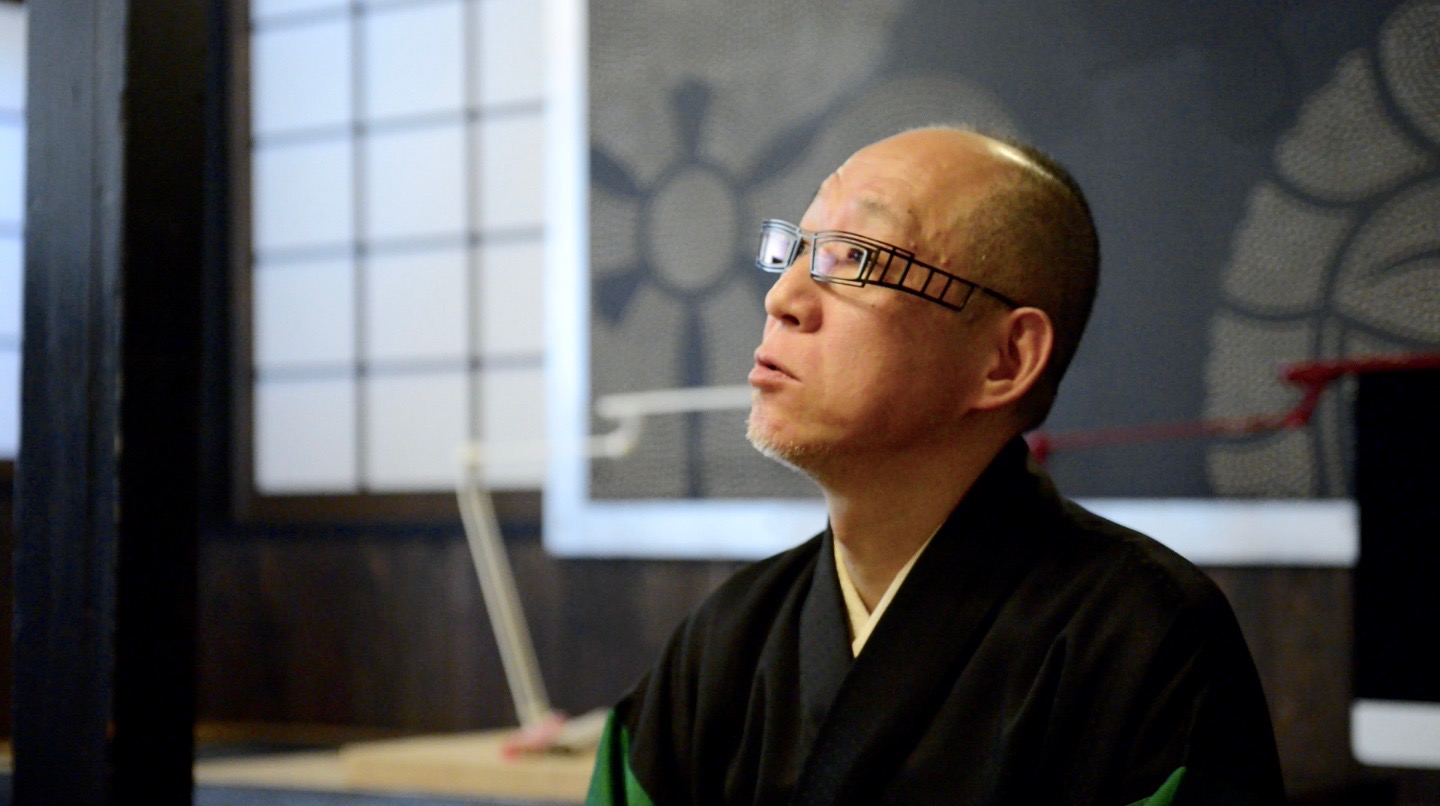
You don’t have Japanese blood, so you can’t have the Kamon? That’s wrong. You can start your family crest history with a newly designed Kamon by you.
They are willing to work with you to have your family crest based on your preferences, such as you want to use a bird pattern to express liberty or some traditional pattern to create your one.
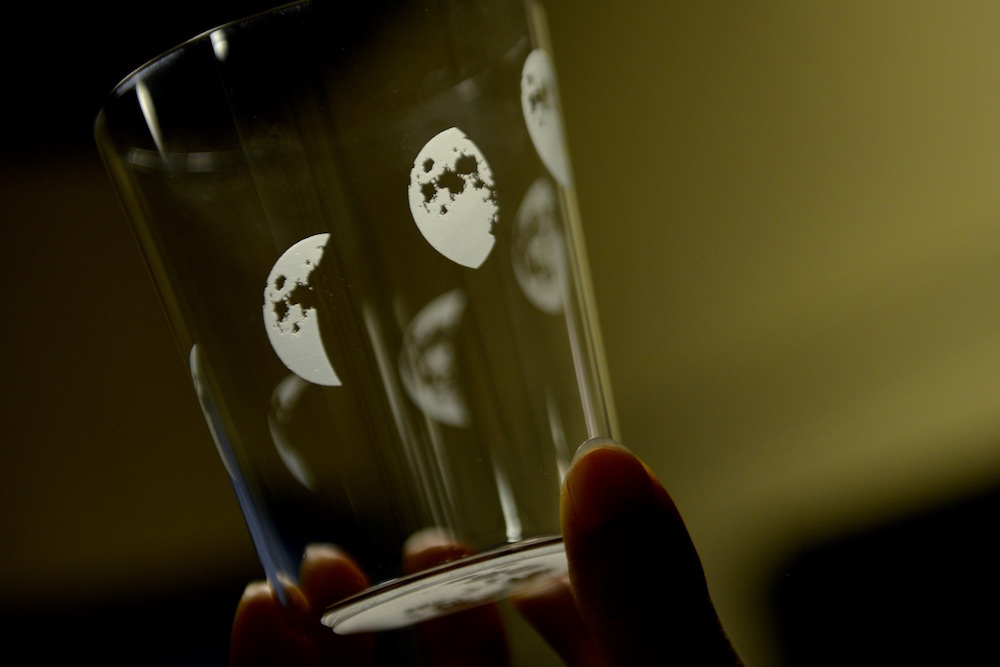
These sophisticated patterns with historic weight have endless possibilities to enrich your life. Let’s see what the powerful energy of the Kamon can add to our lives!
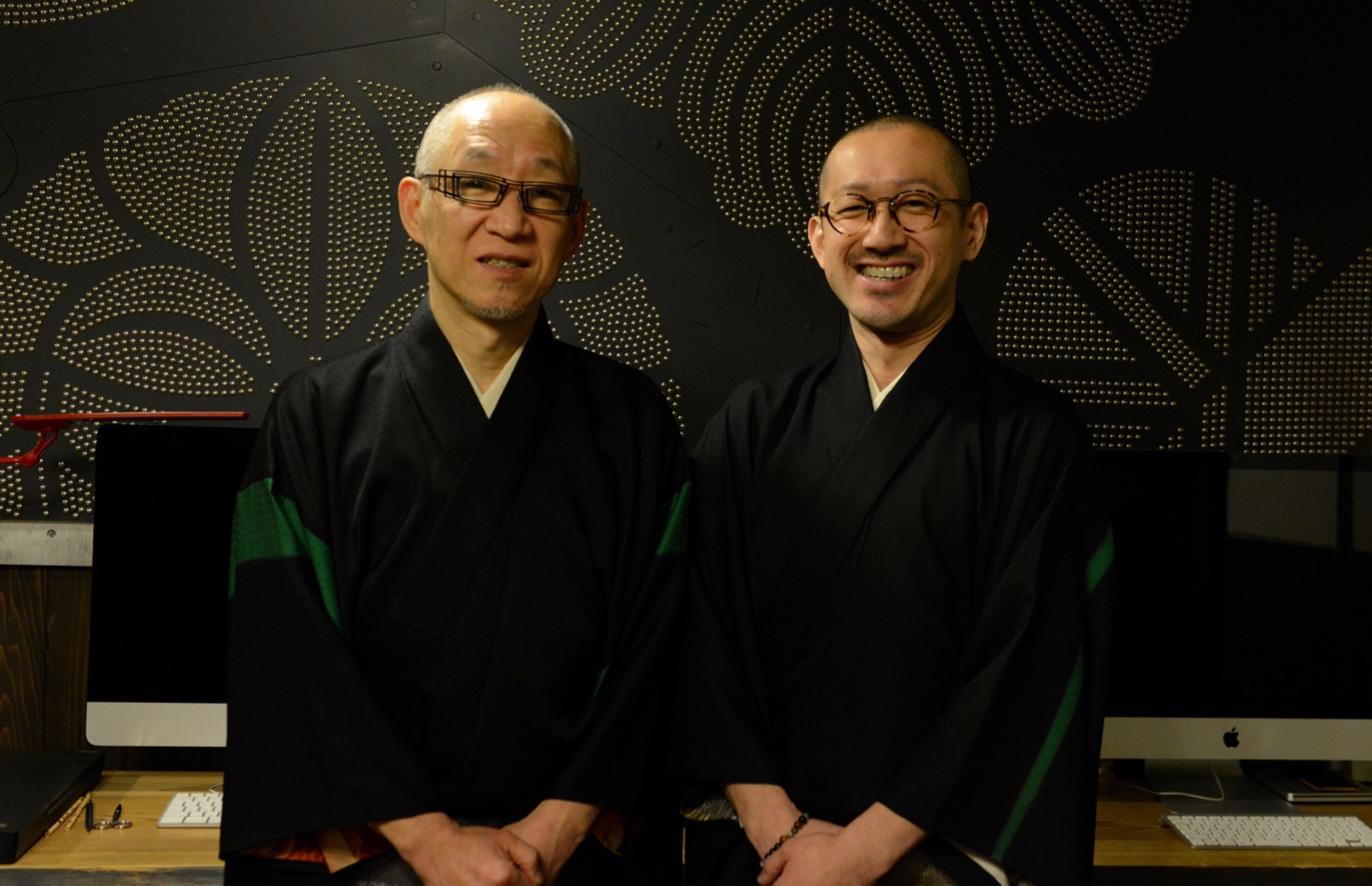
紋章上繪 Kyogen
Related Articles – Kamon
Japanese Family Crest: List of the Lineage Symbols
Shinto Beliefs: 5 Core Values of Japanese Indigenous Religion
Japanese Patterns: Traditional Motifs and Designs
Special Thanks
- 波戸場承龍・耀次 (Shoryu + Yoji Hatoba)
- Michio Asano (AZOTH branch)


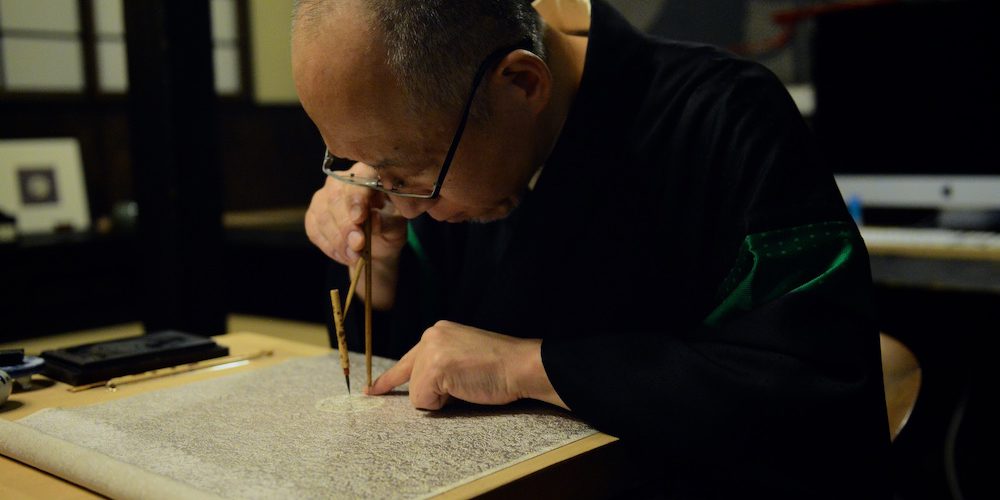
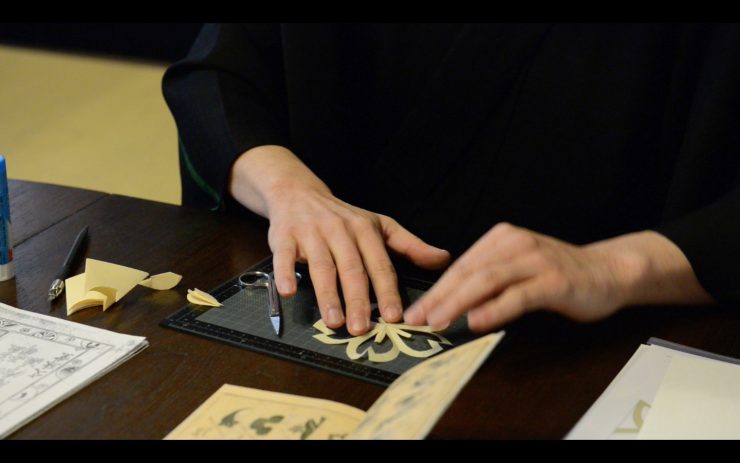
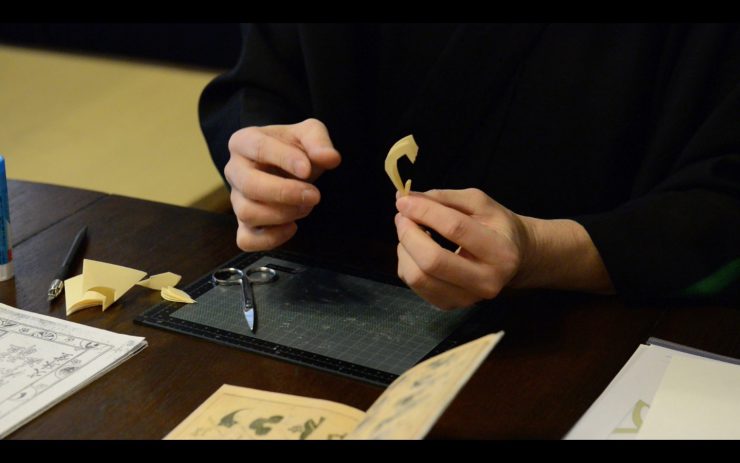
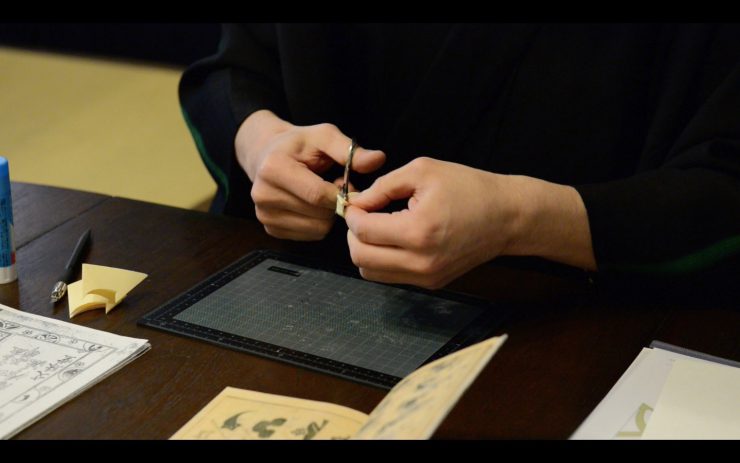
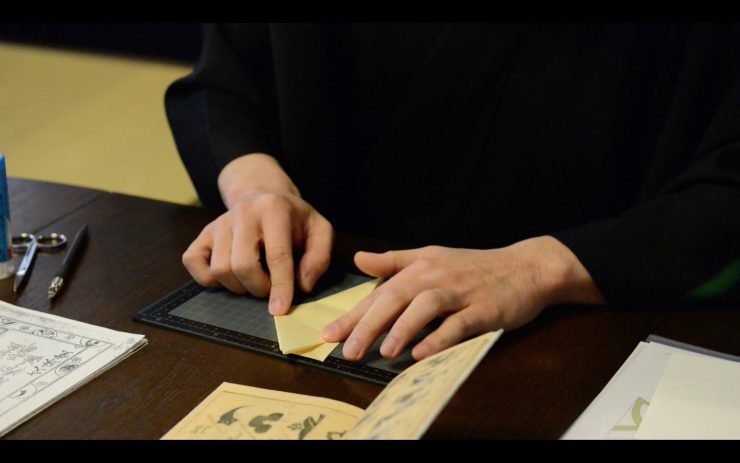
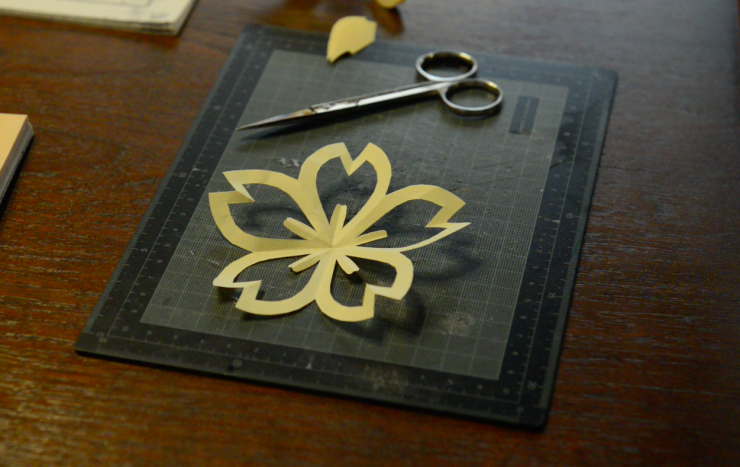
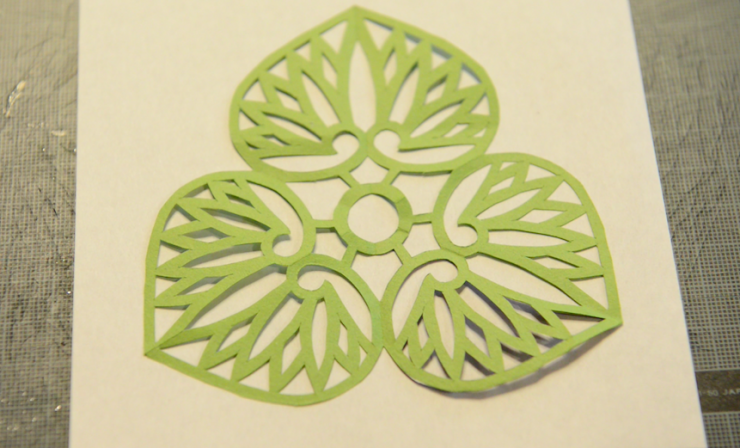
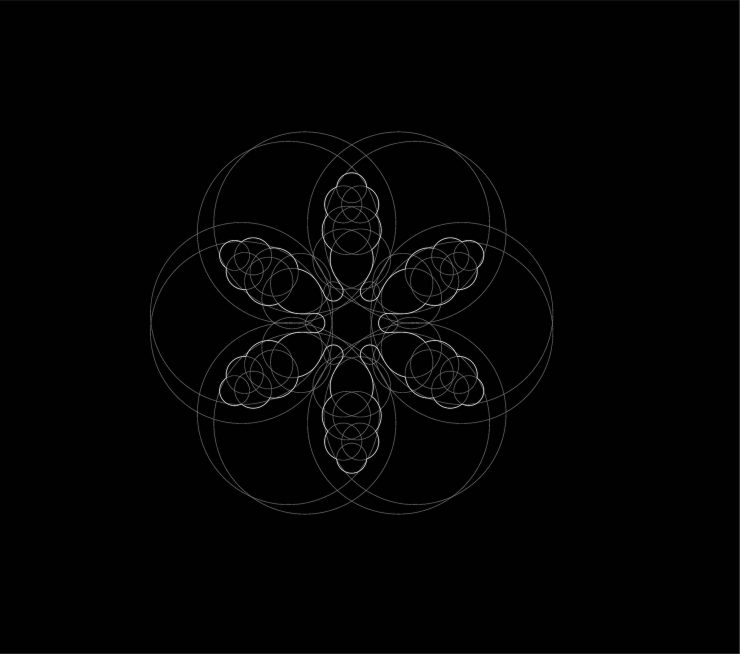
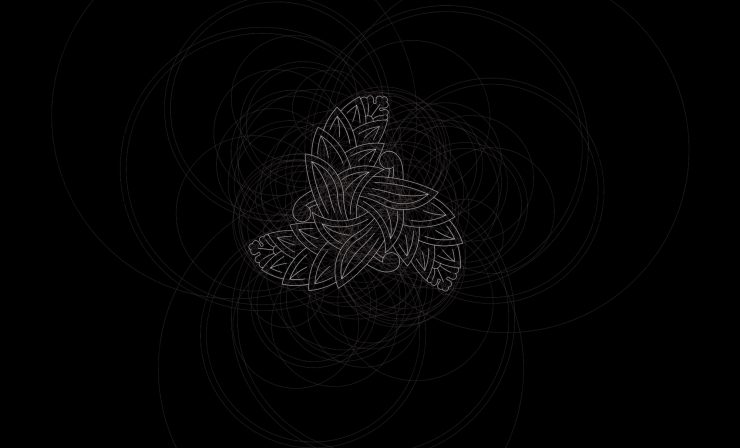
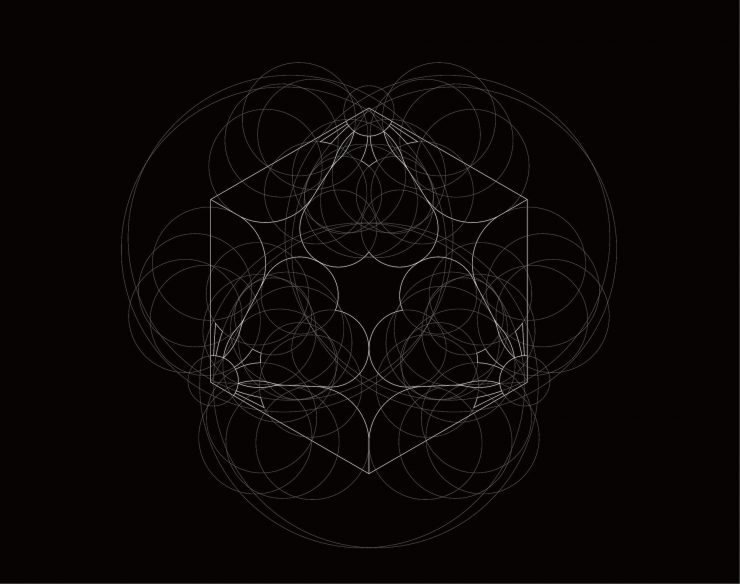
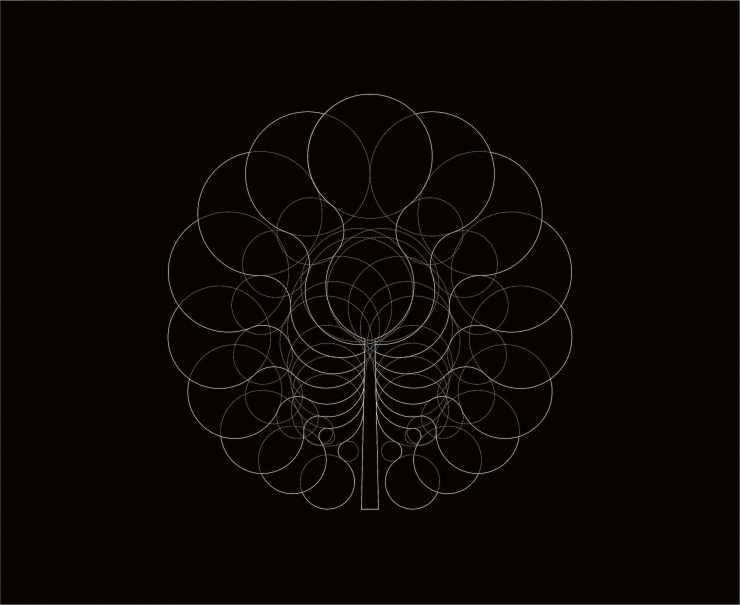

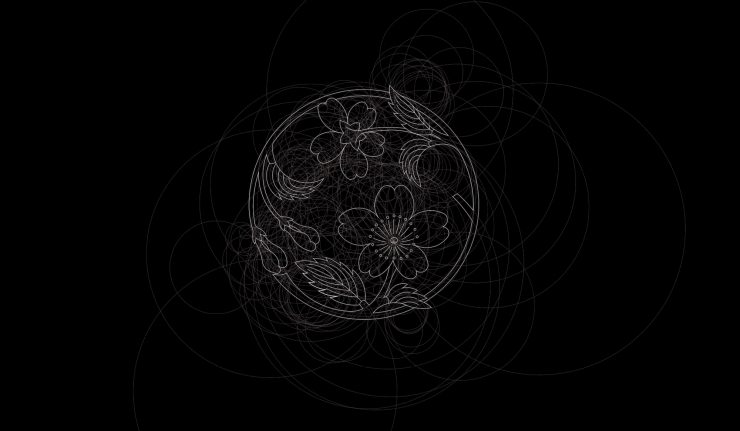
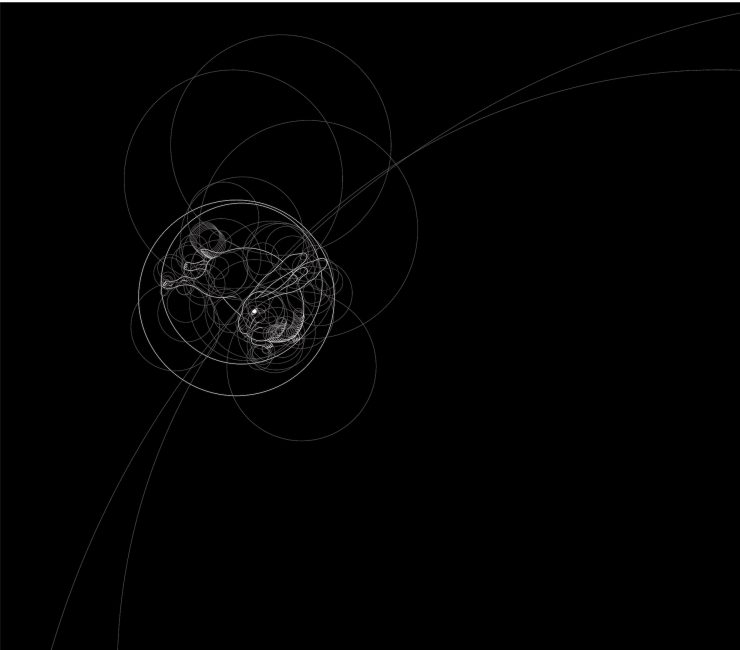
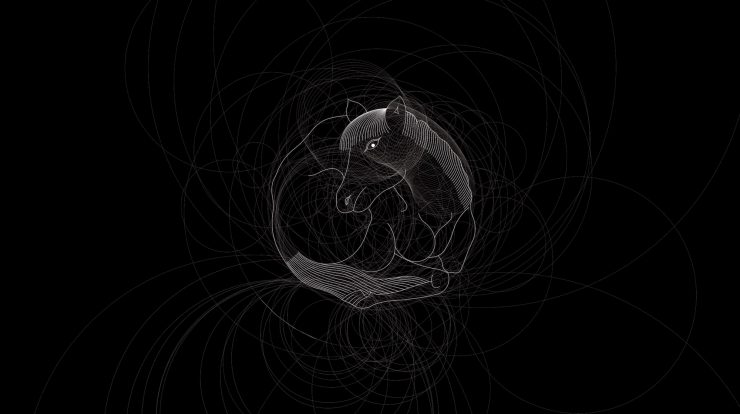
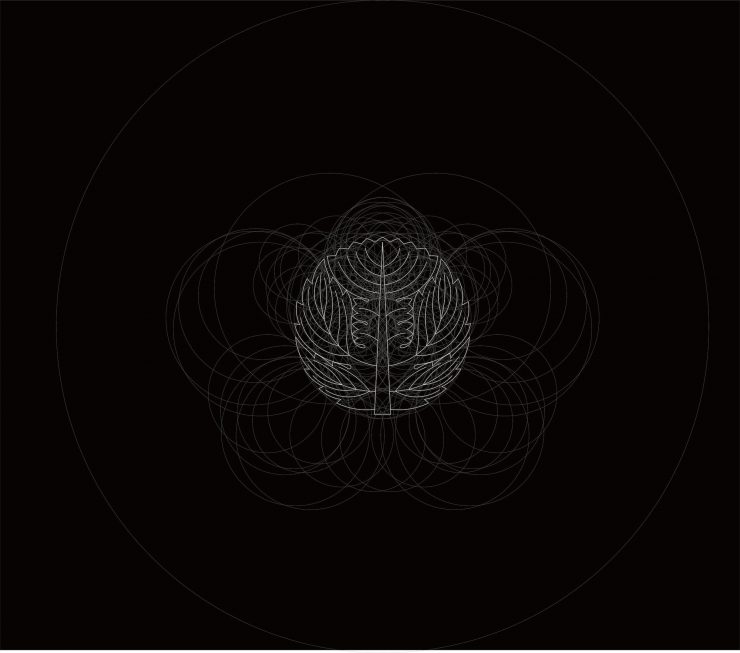
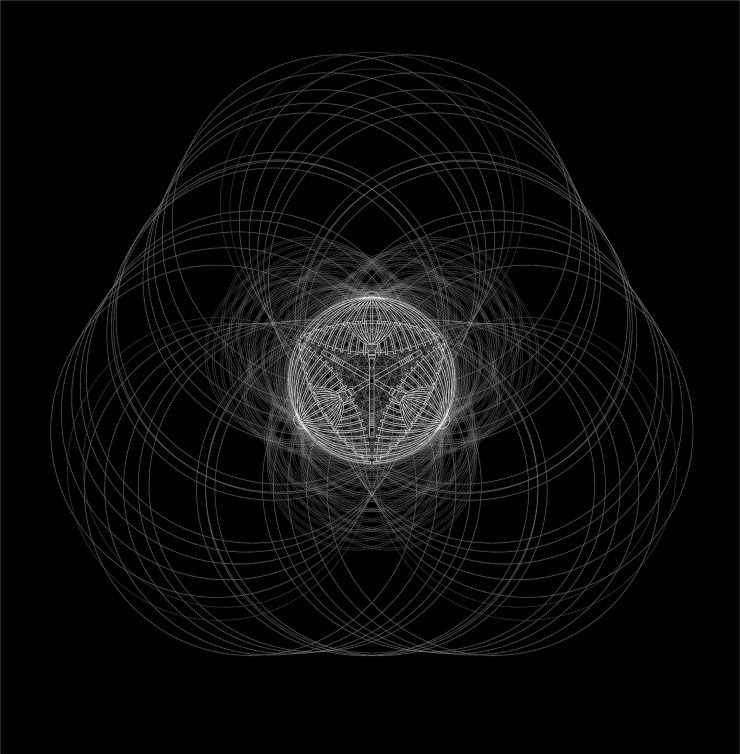
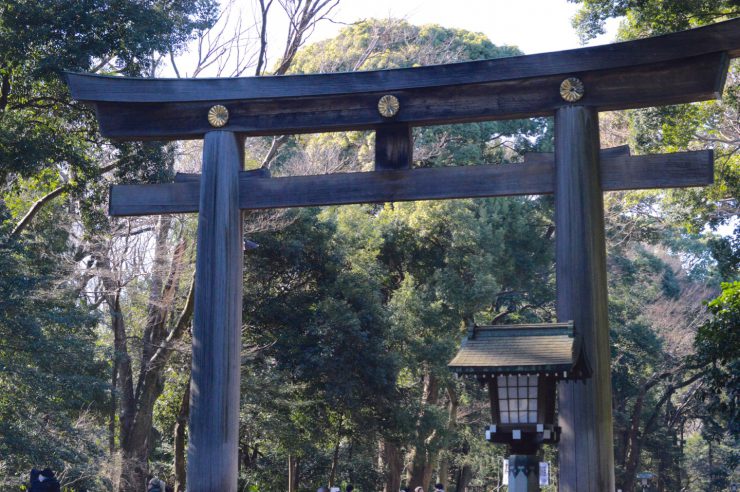
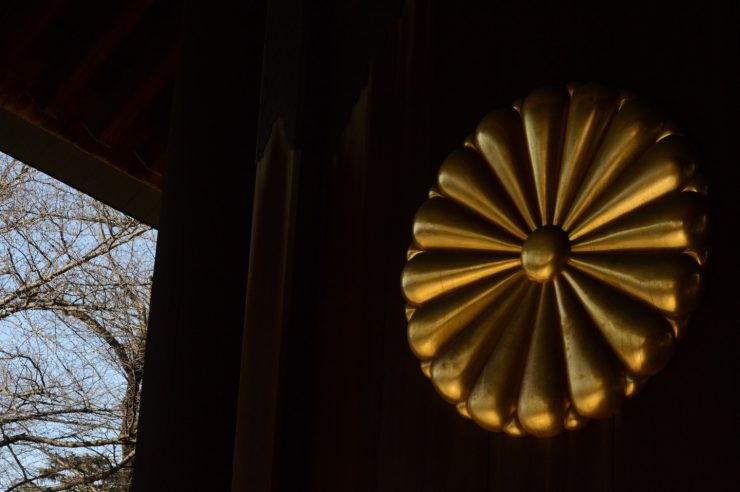
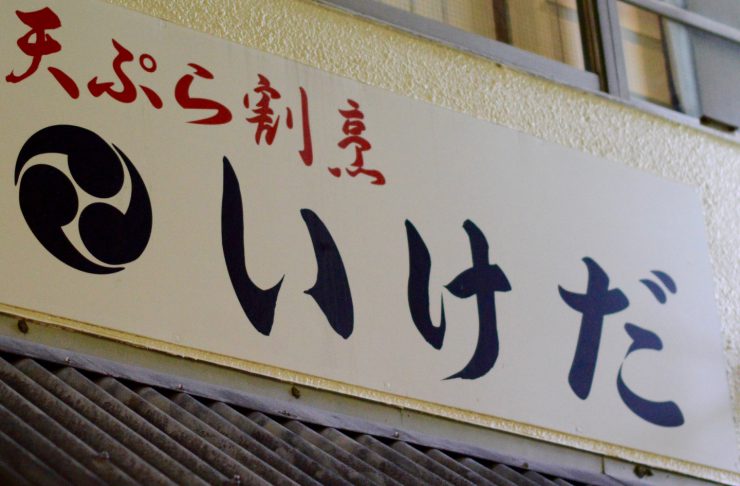
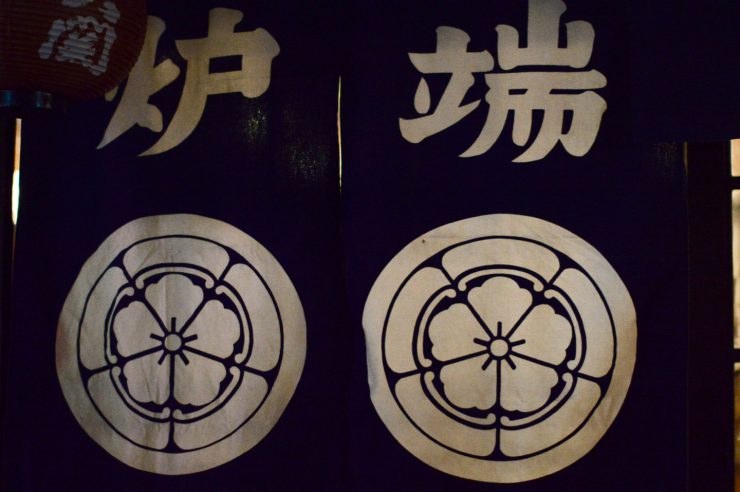

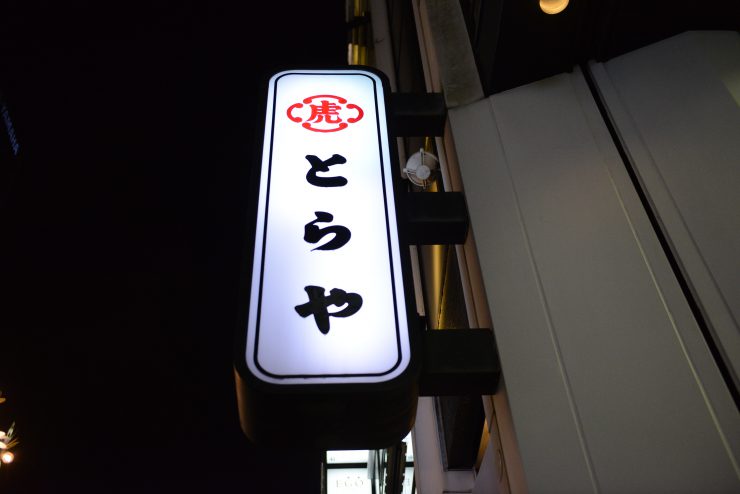
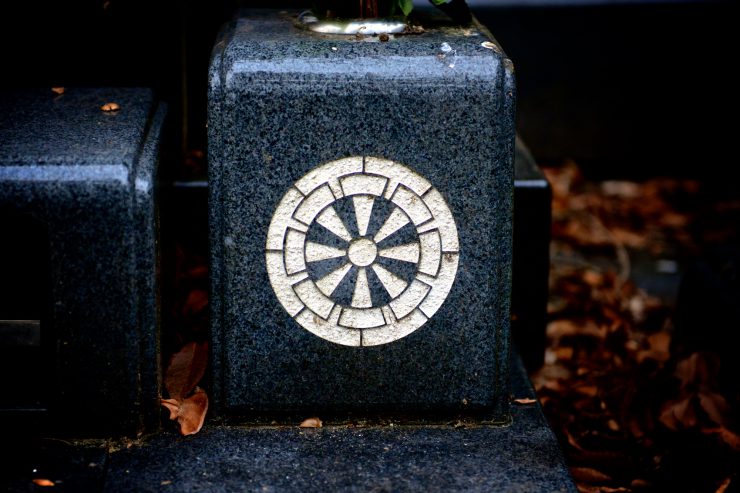
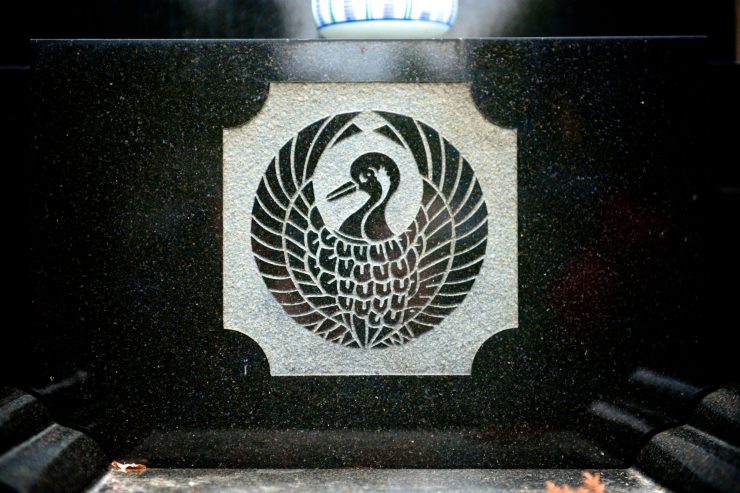
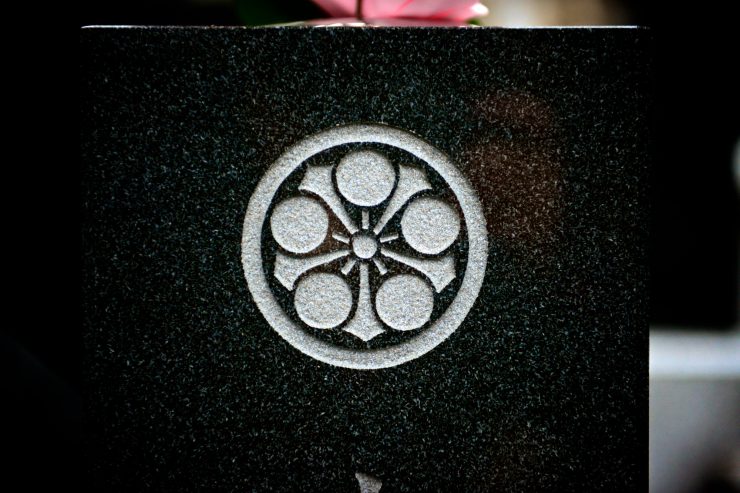
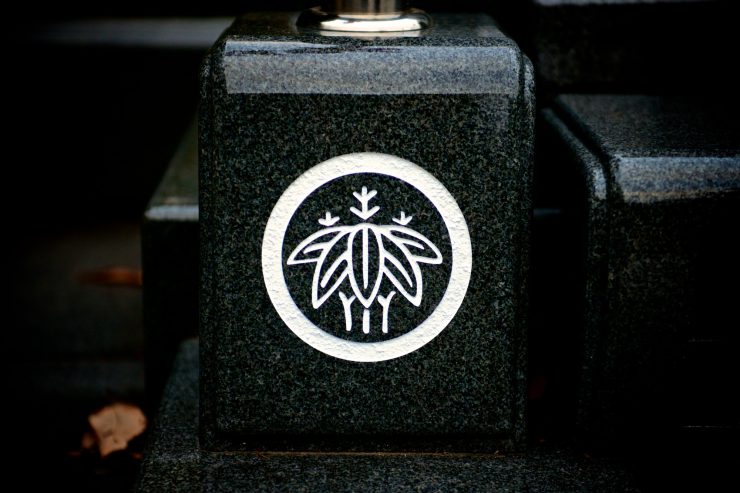
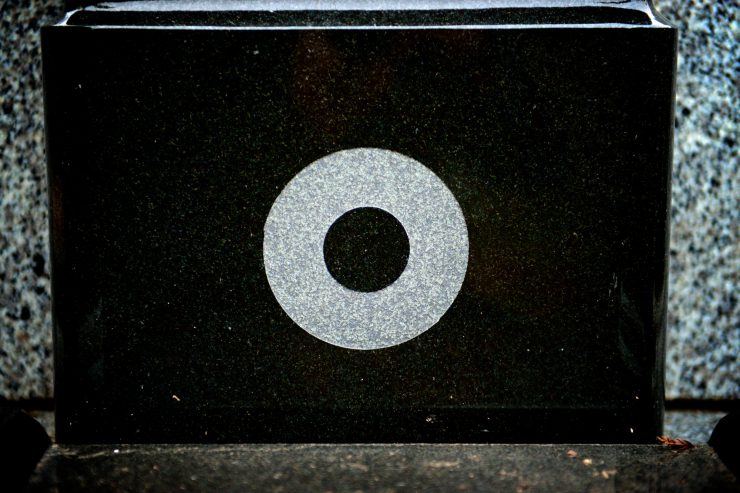
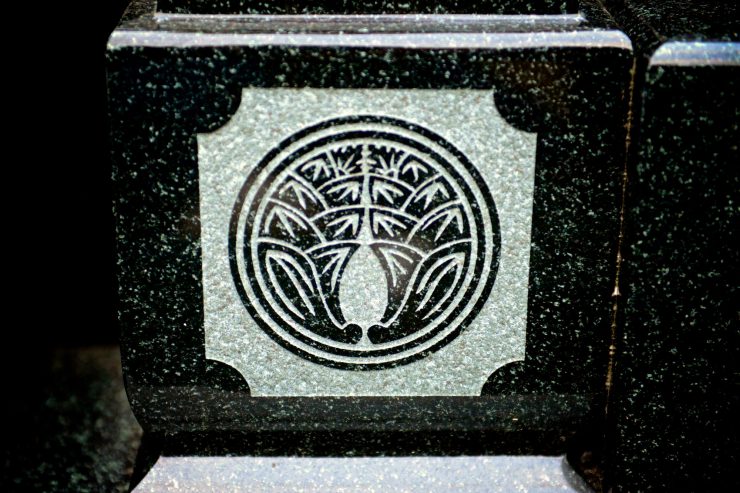
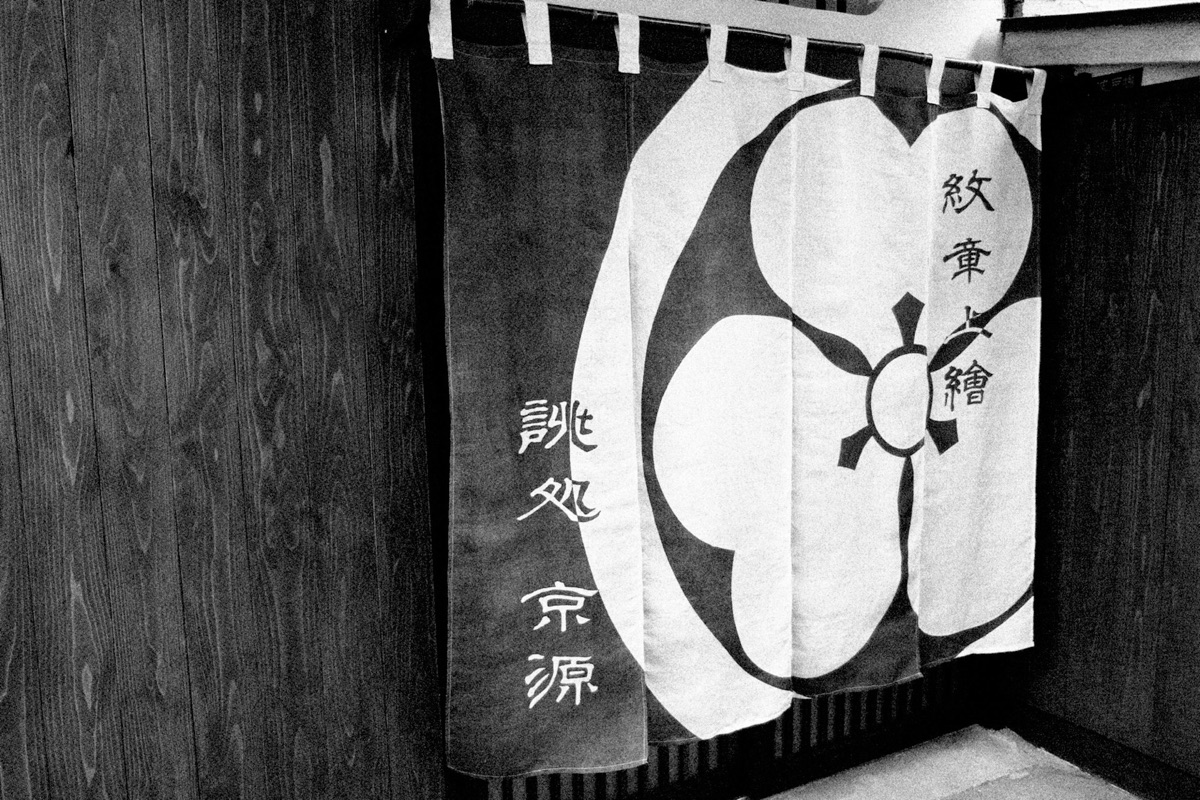
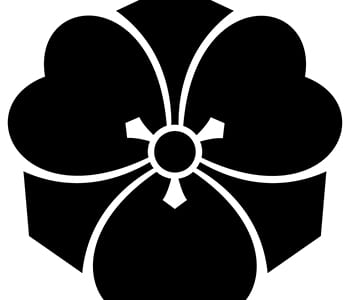
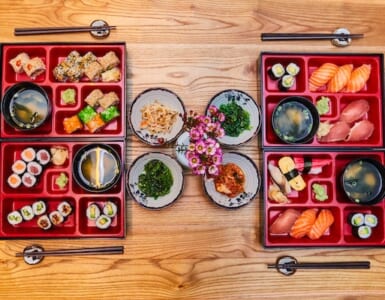
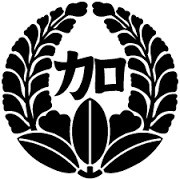


My husband’s Kamon was lost due to a fire. I have a copy of what it looked like. Can you connect me with an artist who can recreate or produce a new one?
Hello Aviva,
Thank you for the comment! Please send me that copy via email so I can see if it’s recognizable. If that is the one I already have, I can send the file to you.
patternz.jp{at}gmail.com
I look forward to hearing from you.
Hiroko
Hello! I am a 4th grade teacher in an American school. We have been learning about Japan and “Kamon” is one of the topics I usually like to cover. I was wondering if this year we could have a tour to a place where students could get a hands on experience on the subject. If you could suggest a place that I could bring my 23 students that will be much appreciated.
Thank you!
Hello there.
I would like to also make a family crest, this is extremely important as it’s my fathers birthday and I have jewelers in dubai who work with Tiffany and co.
Sadly my imagination is very limited but I have ideas which with some help and revisions I’m sure something beautiful can be made.
I would like to reach out. I’m very eager please get in touch with me as soon as you can.
My email is Jenkie.Samuray@gmail.com
Good day.
I am passionate about Japanese culture.
I would like to have my own family coat of arms designed. I wanted to ask how expensive it is to have a coat of arms designed for you.
An approximate statement would suffice for me
Hello! I’m not Japanese, and I want a crest. If I use a crest previously known, do people personally weave crests on kimonos or things? Or do they only weave known crests? My question is basically: “Do crests have to be an official historic crest to be eligible for things like putting them on your kimono.”
Hi Zoe,
Thanks for the comment! So you’d like to have a crest of your own. The Japanese family crest weaved on a kimono is usually a historic one. It is to show which family you belong to. But if your question is you’ll have your own family crest starting from you and wonder whether you can put that on a kimono, that would be totally fine. A family (clan) starts at some point and they inherit the family crest from the ancestor or they can choose/create any crest if you desire. So, the one you choose can be on your kimono as your family crest. Does this answer your question? If not, feel free to write us back.
Hope it helps!
Hiroko
Ola, gostaria de saber se tem mais algum kamon usado pelo clã Suzuki, ou eles só usavam o daki ine
Ola Leonardo,
The family name Suzuki has many family crests attached to it depending on each different origin and location.
And one of them has the Daki-ine (Embracing ear of rice) for sure. I hope it helps.
Have a wonderful week!
Hiroko
Hi!
My name is Valentin. I do not have a Japanese lineage but I have will have my wedding soon and start my own family. I want the creation of my own family crest then and engrave it into our wedding bands and engagement ring for my wife.
Is there some kind of price list for the creation of family crest? I reached out to kyo-gen on the 6th of dec. 2018 without any response until now. Can you help me out here?
Best Regards
Valentin
Wow. thats what I call a fast reply from Kyo-gen. Thank you very much for your help!
Oh wow, that’s good!:) Glad they wrote you back. We hope you will receive the newly created best family crest ever for your new family!
Best,
Hiroko
Hi Valentin,
Thanks for reaching out to us and congratulations on your marriage!
We’ve written to kyo-gen about you and we’re waiting for them to respond.
You might hear from them back or in case we hear from them, we would write to you then.
Best,
Hiroko
Hi!
My name is Azhar. I do not have a Japanese lineage but I have just started my own family. Who can I contact to create my family Kamon? I will be going down to Tokyo on 25 Feb and would appreciate if I can find someone who can design a kamon for my family.
Thank you and appreciate it so much.
-Azhar-
Hi Azhar!
Congratulations on starting your own family! We know exactly the right persons you want to contact for your wish.
You can definitely create your own kamon for your family based on the families’ history and values.
Such innovative work can be done with Japanese family crest artisans, Shoryu Hatoba and Yoji Hatoba (Kyogen Inc.), who work not only on traditional kimono, but also on many products with creative kamons (yes, they make new kamons).
You can check out their website and contact them via email: info@kyo-gen.com.
http://www.kyo-gen.com/zhu_shi_hui_she_jing_yuan/Shoryu_Hatoba_About.html
Also, you can check out our interview with them from here, which shows their philosophy and innovative works.
https://www.patternz.jp/kamon-japanese-family-crest-artisans/
You may want to write them ahead of your trip to Tokyo that you want to create your new kamon based on the values you want to put into the kamon.
Your parents’ family history might help to deepen the concept, the value you want to create with your new one.
Please let us know how it goes with your project!
Fond regards,
Hiroko
Hello Hiroko-San,
Thank you for your reply.
I have written to them and awaiting for their reply. Hopefully they will reply before I fly over. Will keep you updated.
-Azhar-
Hello! 🙂
My name is Michael. I am a graphic designer from Los Angeles.
Great website. So much interesting information about the Kamon.
Can you recommend a book or any available tutorials that shows how one can create a Kamon?
Thank you very much for your time.
-Mike
Hi Mike!
Thanks for the comment! That’s a good question if there are any tutorials you can learn to draw kamons. Unfortunately, there is not the exact resource we can refer to as a complete tutorial. Well, the Japanese family crest artisans who we were privileged to interview use Illustrator on Mac to draw Kamons. They say they use arcs to draw patterns. You might want to check out these videos below which may give you a hint of drawing them and it’s a good idea to be familiar with varieties of Japanese family crest patterns so you may get a knack to draw patterns.
Videos
https://www.youtube.com/watch?v=jx4zHhZKZkU
https://www.youtube.com/watch?v=jkKOwpuBn0M
https://www.youtube.com/watch?v=SSIGiBblgd8
Book
Japanese Design Motifs: 4,260 Illustrations of Japanese Crests
https://www.amazon.com/gp/product/0486228746/ref=as_li_tl?ie=UTF8&camp=1789&creative=9325&creativeASIN=0486228746&linkCode=as2&tag=johnnytimes-20&linkId=8c03c5666ab975eb840d7acf2ff18a99
Hope it helps!
Hiroko
Hello Hiroko,
First of all, arigato gozaimasu!
I really appreciate your response. 🙂
I will certainly look into the videos and books you have recommended.
Have a great day! 🙂
-Mike B.
No problem at all! Hope you get some inspiration from them;)
Hiroko
Hi there!
I really love the rich background meanings embedded in and expressed by a kamon. But I’m not Japanese. Is there any artist I can reach to commission a personal crest under the philosophy of kamon?
Hi Catalina,
Thanks for the comment! We know just the right people you want to reach out. Shoryu Hatoba and Yoji Hatoba are Japanese family crest artists based in Tokyo who we’ve interviewed last December. Yoji is the third-generation family crest artist and you can write him in English. They encourage people to have the individual crest as well, so they can be great partners to work with. You can check their website first (http://www.kyo-gen.com/zhu_shi_hui_she_jing_yuan/bo_hu_chang_cheng_long_jia_wen_zuo_cheng.html) and their contact address: info@kyo-gen.com.
Hope it helps!
Hiroko
Hello! I am very excited to delve further into the Kamon. My great grandparents were The Kuwata and my great grandmother’s maiden name was Yoneda. I will definitely be in touch about researching the Kamon for either family.
Hi Gwen,
Thanks for the comment! So you’d like to delve into the kamon both from your paternal and maternal line (Kuwata and Yoneda families).
We can help you dig into it through our service if you wish. https://www.patternz.jp/product/kamon-consulting/
Having information on each family domicile and any other information related to the family would help.
Look forward to hearing from you soon!
Hiroko
Mi apellido materno es Iwashita .Mi abuelo nacio en Kagoshima en Beppu Eicho.El mon es el Ivy cual seria su historia?.Gracias
Hola Hugo,
Thanks for contacting us! So you already know your kamon, the ivy crest.
We can help you with our standard service to compile the report of possible origin and history of your family name and the kamon (family crest).
You can check our service from here.
https://www.patternz.jp/product/kamon-consulting/
If you have any questions, please let us know from here. patternz.jp@gmail.com
Gracias!
Hiroko